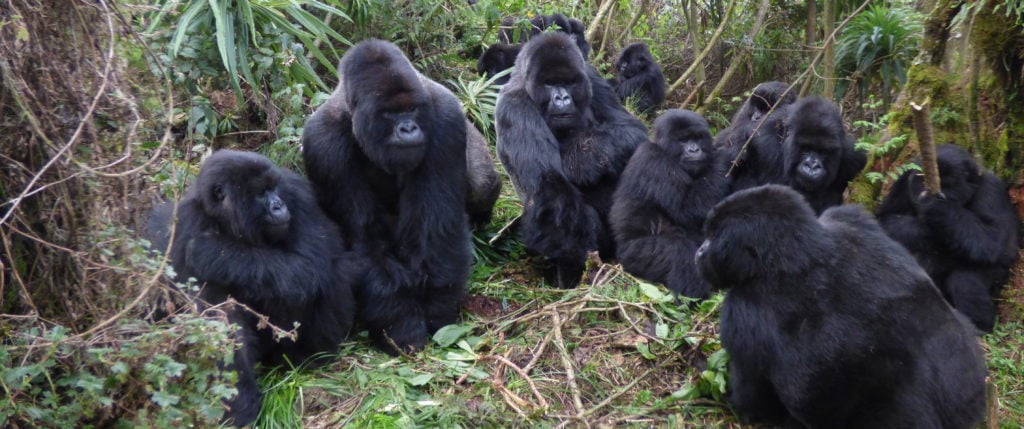
Fact 1: Silverbacks are more than just protectors!
Silverbacks may have historically been thought of as just the protector, but they fill many roles within the group. They lead daily travel and activities, keep the group cohesive and peaceful, defend the group from outside male intruders.
But just like human dads, gorilla dads know how to have a little fun with their little ones. They are incredibly patient, often acting as jungle gyms for infants who lay on and roll off their backs. On more than one occasion we have seen Mafunzo babysitting and playing with up to six infants and silverback Isabukuru was a favorite among our staff for his love of hanging out with the youngsters in his group.
Fact 2: Silverbacks form strong bonds with infants, too!
Less commonly showcased is relationships between males and youngsters. In fact, starting around age two, silverbacks become one of the preferred social partners of infants. Our data show that this happens regardless of whether or not the male is the father. Instead, what is a better predictor of a male’s relationship with an infant is his dominance status—the dominant silverback is generally the most nurturing, even to kids that aren’t his own.
Fact 3: Rugira and Kirahure
In June 2011, 3-year-old Rugira was left behind when her mother Muganga transferred to Isabukuru’s group. Fortunately, this outgoing youngster bonded quickly with dominant silverback Kirahure. The silverback responded immediately to the infant in need and began to share his night nest with her, protectively staying close to her during the day. While paternity has not been confirmed, we know that males will act in this way towards orphans regardless of whether or not they are their father.
Fact 4: Who’s your daddy?
Understanding the family trees of gorillas gives us deep insight into how relatedness affects things like social relationships, mate preferences and even physical features. At the time that Dian Fossey started her work, she had to guess at relatedness based on patterns of interactions. Through daily observation, we have always been able to determine maternal relatedness by observing when infants were born. Paternal relatedness, however, has been a bit trickier. In groups with a single male, the male was generally assumed to be the father as females do not breed outside of their groups. But until a few decades ago, we couldn’t determine paternity in the approximately 40% of groups that had multiple males. Now, we can use fecal samples gathered from young gorillas to genetically identify their fathers. Genetic data can also tell us about the overall health of the population—for example, the level of inbreeding that might occur.
Fact 5: Twibuke and Iramarere
These two are one of our favorite father/son combos. Twibuke, who is the son of Shinda, took on the dominant silverback role at the young age of 17 and has been very successful in keeping his group together and safe. His son Iramarere is the son of Tegereza, who unlike most other female gorillas, has never transferred groups and was a part of the original Shinda’s group. 3-year-old Iramarere is about to tackle his first major development stage, weaning from his mother and gaining independence as a juvenile gorilla. We are excited to watch him grow and to see if he follows in his father’s footsteps by becoming a dominant silverback one day.
If you are still looking for that perfect gift for Father’s Day gift, a symbolic adoption of our Twibuke and Iramarere father/son duo will make for a great and meaningful gift for fathers, grandfathers, and great grandfathers around the world!
Sign up for the latest gorilla news and updates!







